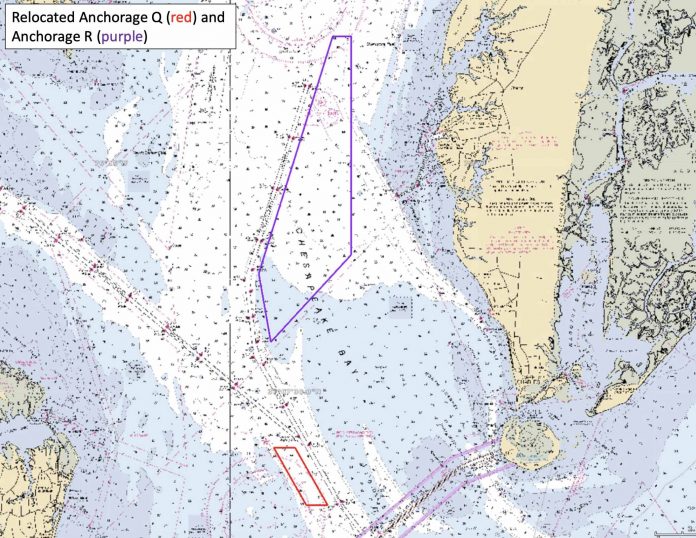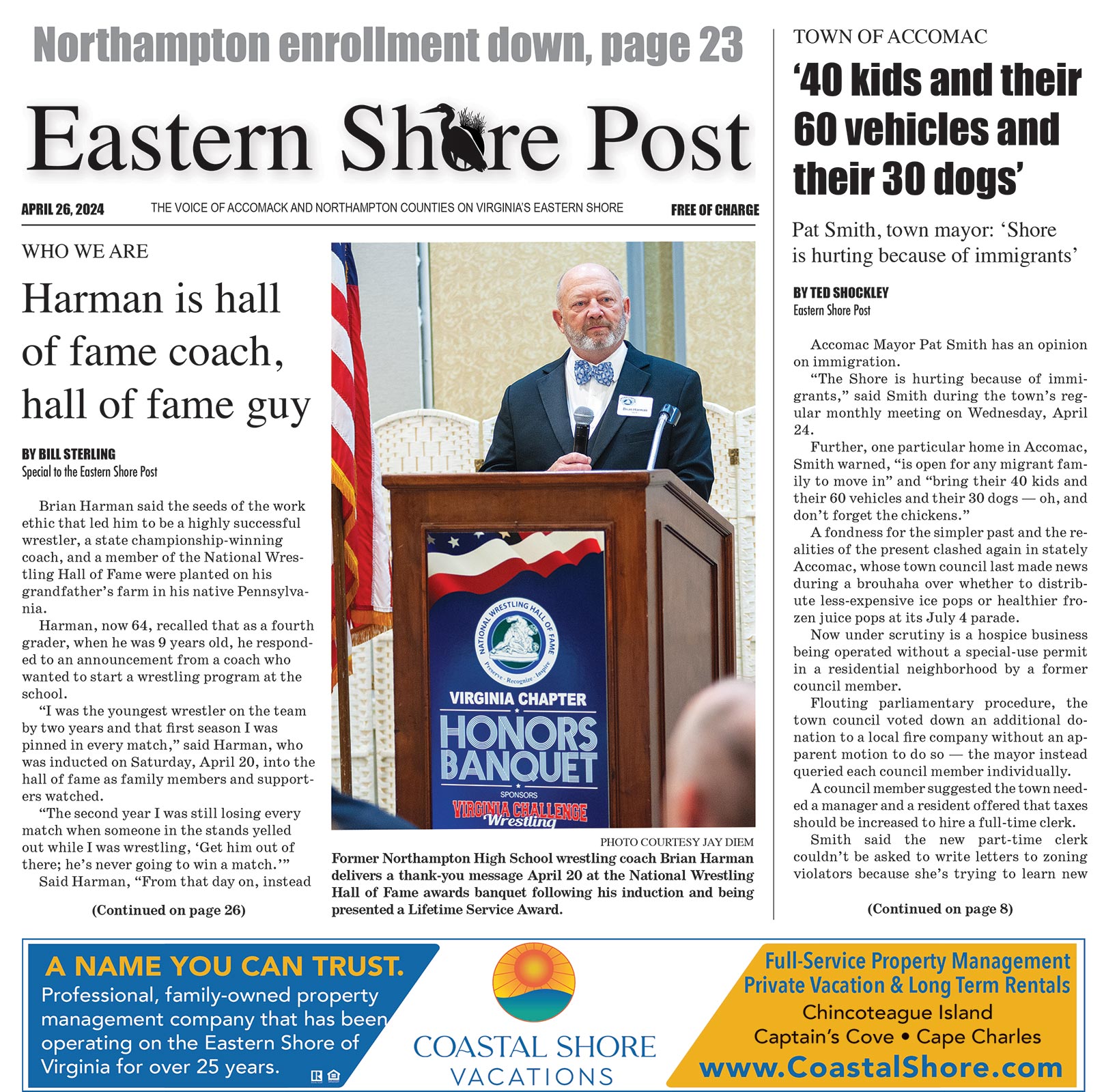
By Stefanie Jackson – For years, ships have anchored outside of Cape Charles, and the U.S. Coast Guard did not have the authority to ensure their safety and security, but last month, its fifth district commander, Rear Adm. Keith Smith, signed a final rule and made it official.
“The Coast Guard facilitates $5.4 trillion in commerce through the Maritime Transportation System (MTS) annually,” Smith said in a May 28 press release.
“Formally establishing this anchorage, where ships already anchor … helps ensure the safety of the MTS. It also protects the Chesapeake Bay by reducing potential pollution threats through regulation of the area.”
The new anchorage was named Anchorage R, and an anchorage for quarantined ships, Anchorage Q, was moved farther south.
Plans to formally establish an anchorage near Cape Charles began in 2016. The Coast Guard solicited public input through several channels, including three public meetings and a Notice of Proposed Rule-Making that received 84 written comments.
Comments raised concerns about potential risks associated with the anchorage, including vessels dragging anchor, oil spills, sewage pollution, and negative impacts on fisheries.
Chairman John Joeckel, of the Eastern Shore of Virginia Regional Navigable Waterways Committee, reviewed the final rule and noted that it added two requirements that would help mitigate the risk of oil spills or vessels dragging anchor.
First, no vessel may transfer oil or chemicals in bulk to another vessel without permission from the COTP (captain of the port), enabling the COTP to control the conditions of the transfer.
Second, a non-self-propelled vessel, such as a barge, must be tended by a towing vessel unless otherwise permitted by the COTP, reducing the risk of such a vessel breaking away and dragging anchor.
The Coast Guard believed that the additional restrictions on anchored vessels, combined with existing laws and regulations, were sufficient to prevent an oil spill, and it made no additions addressing local oil spill response capability.
Several citizens were concerned that some ships may not be properly treating their sewage before discharging it into the Chesapeake Bay or that nutrient levels in properly treated sewage may be harmful.
Citizens called for the creation of a no-discharge zone in the Chesapeake Bay as a solution.
The final rule did not add any more requirements for sewage discharge, considering existing laws and regulations on ships and sewage.
Joeckel noted that the creation of a no-discharge zone is beyond the scope of the rule-making; however, a letter was sent to the Virginia Department of Environmental Quality in November 2019 informing it that citizens had requested the creation of a no-discharge zone.
The U.S. Environmental Protection Agency may establish a no-discharge zone when requested by a state.
Neither did the Coast Guard change the proposed rule regarding discharge of ballast water or impact to fisheries. It asserted that establishing the anchorage would have no adverse effect, and the risks anchored vessels pose pre-exist the designation of the anchorage.
Concerns were also raised about possible congestion at the anchorage, and citizens made suggestions about how long vessels should stay; the Coast Guard concluded the 30-day limit that was previously set would be sufficient.
Capt. Kevin Carroll, commander of Coast Guard Sector Virginia, explained in an email last month that the new anchorage was born out of an ongoing need of commercial vessels that were using the Lynnhaven naval anchorages near Virginia Beach, Va., until they became unavailable due to increased military use.
Carroll said, “It is my sincere belief that as this process completes, the southern Chesapeake Bay will have a designated deep draft anchorage that will allow for a safer place for ships to anchor while promoting the health and safety of other vessel traffic, the environment, and nearby residents.”


